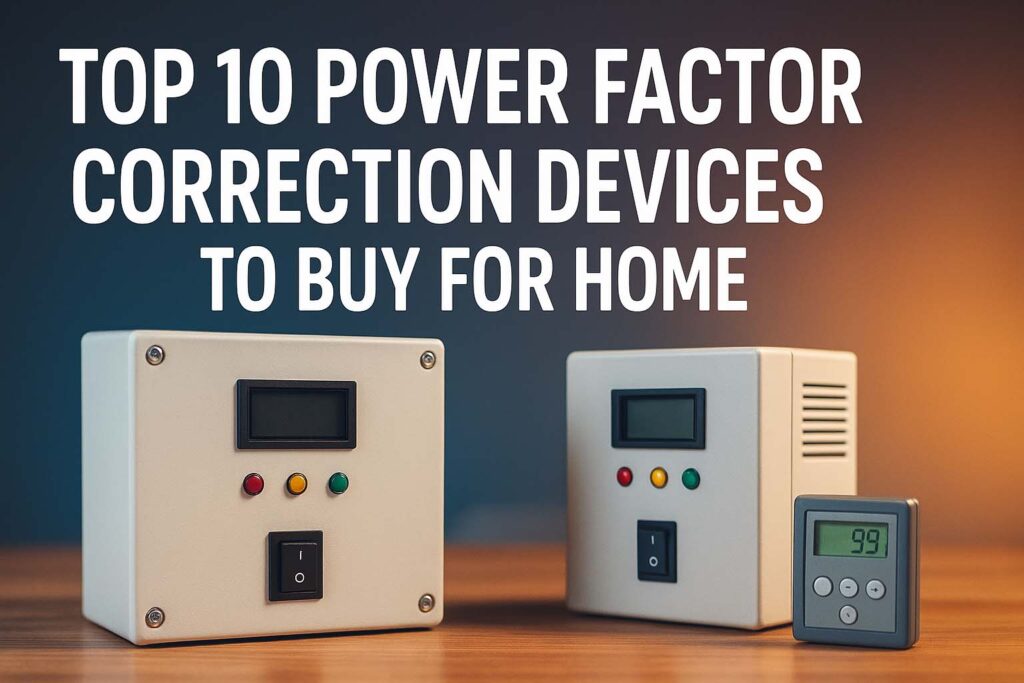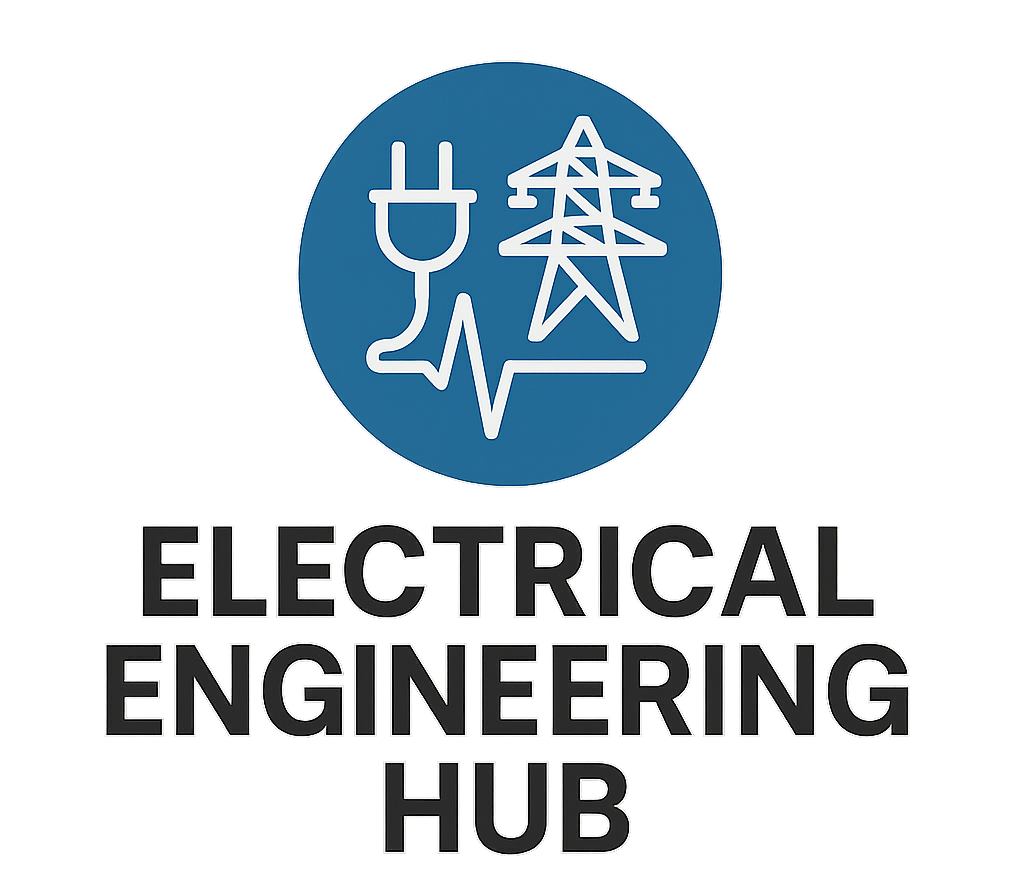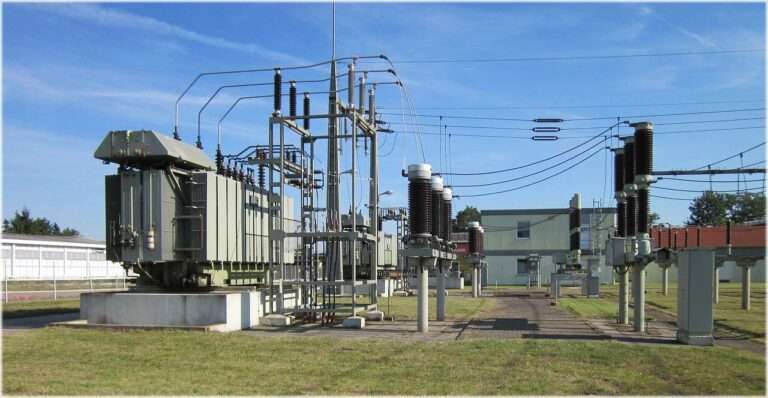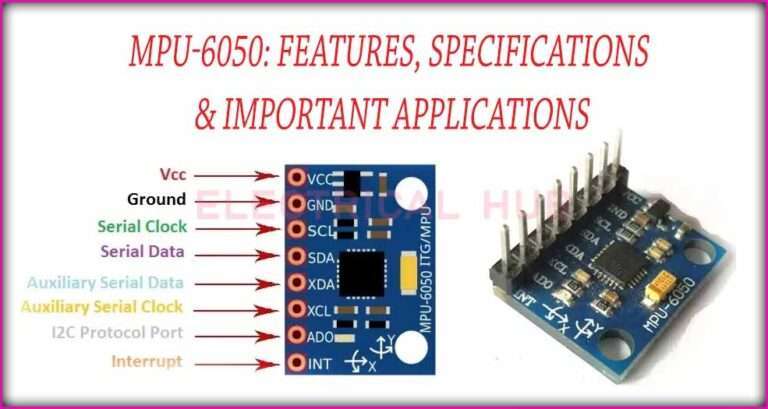Top 10 Power Factor Correction Devices to Buy for Home
Improving the energy efficiency of your house is one of the smartest ways to save on electricity bills. One of the most overlooked areas in this regard is the power factor. Most home appliances, especially those with motors like refrigerators, air conditioners, and pumps, do not use electricity efficiently. They draw reactive power from the grid, lowering the power factor and causing extra losses. That’s where a power factor correction device for home comes in.
Table of Contents
Table of Contents

These devices are small, easy to install, and designed to optimize the way your appliances use electricity. By improving your power factor, they help reduce energy wastage, extend appliance life, and sometimes even lower your utility bills. If you are planning to invest in one, it is important to choose the right device. To make things easier, you can also try this Power Factor Correction Calculator to estimate how much correction you may need before buying any device.
Before we move to the list of the top devices, let’s highlight the key takeaways so you can understand why they matter.
Key Takeaways
- A power factor correction device for home improves efficiency by reducing reactive power losses.
- These devices can extend appliance life and sometimes reduce electricity bills.
- Choosing the right capacity is crucial, which you can calculate with a PF Correction Calculator.
Now, let’s look at the top 10 power factor correction devices for home that are reliable, effective, and widely recommended.
Know more about Off-Grid Solar System Design Guide for Remote Areas
1. Siemens Household Power Factor Correction Unit
Siemens is a trusted global name in electrical systems. Their residential PF correction units are designed for homes with heavy appliance usage. They provide capacitor-based correction, ensuring your motors and compressors operate more efficiently. Built-in overload protection makes them safe for daily use.
Technical Insight: Siemens units typically come in small kVAR ratings, suitable for households. They are efficient in handling inductive loads from air conditioners and refrigerators.
| Feature | Details |
|---|---|
| Brand | Siemens |
| Type | Capacitor-based |
| Best for | Homes with heavy appliance load |
2. Schneider Electric Power Factor Optimizer
Schneider offers compact PF devices for home applications. These are modular units that can be wall-mounted near your main distribution box. The device has automatic switching for capacitors depending on the load, making it energy-smart and adaptive.
Technical Insight: Adaptive correction ensures the device only activates when needed, avoiding over-correction. This feature extends device life and ensures stable operation.
3. Havells Residential Power Saver
Havells is known for reliable electrical accessories. Their residential power saver units double as a power factor correction device for home. They combine power saving with surge protection, making them dual-purpose.
Technical Insight: Havells units work best in areas where voltage fluctuations are common. Their PF correction capacitors are paired with protection circuits to avoid capacitor burnout.
4. ABB Compact Power Factor Controller
ABB offers advanced home PF controllers with microprocessor-based technology. Instead of just fixed capacitors, ABB units monitor the incoming power factor and automatically adjust capacitor banks.
Technical Insight: ABB’s automatic power factor correction ensures that your home always stays close to unity power factor, which is technically ideal.
Know more about Short Circuit Calculation Methods: IEC vs ANSI
5. Crompton Power Factor Corrector for Homes
Crompton’s power-saving devices are tailored for residential usage. They focus on simple capacitor correction and are very affordable compared to big industrial names.
Technical Insight: Crompton devices are suitable for small homes where the number of inductive appliances is limited. They are less suitable for houses with large HVAC systems.
6. Eaton Home Power Factor Saver
Eaton provides high-quality electrical equipment globally. Their PF devices are compact, safe, and come with thermal protection. These are ideal for homes with high air conditioning loads.
Technical Insight: Eaton devices are known for durability. They use high-quality capacitors that can last longer under continuous load conditions.
7. L&T Power Factor Correction Device for Home
Larsen & Toubro (L&T) provides a wide range of energy-saving solutions. Their home-focused PF correction devices use smart switching relays. They are often installed in premium homes with multiple high-load appliances.
Technical Insight: L&T offers devices that combine real-time monitoring with correction, ensuring efficient power usage.
8. Generic Plug-in Power Factor Correction Devices
Apart from branded products, many generic devices are available online. These are simple plug-and-play devices that connect to your wall socket. They are affordable and easy to use, though not as powerful as professional solutions.
Technical Insight: While generic devices can improve efficiency slightly, they are not a replacement for a properly rated correction system. Use them for small-scale savings only.
Know more about Transformer Cooling Methods: ONAN, ONAF, OFAF & More
9. Siemens Sirius Modular Home Correction Unit
Another Siemens product, the Sirius range, provides modular PF correction with a compact footprint. They are built with industrial-grade components but scaled for residential use.
Technical Insight: These devices are suitable for villas and large homes where heavy motor-based loads are present, like swimming pool pumps or large HVAC units.
10. Smart IoT-Based Power Factor Correction Device for Home
New smart PF devices come with IoT features. They allow you to monitor your power factor, load, and savings via a mobile app. Some even integrate with smart home systems.
Technical Insight: IoT-based devices are perfect for tech-savvy homeowners. They provide real-time feedback, which helps you track both savings and performance.
Comparison Table – Power Factor Correction Devices for Home
| Brand / Model | Type | Capacity Range (kVAR) | Best For | Approx. Price Range* |
|---|---|---|---|---|
| Siemens Household PF Unit | Capacitor-based | 1 – 5 kVAR | Homes with multiple ACs & fridges | $120 – $200 |
| Schneider Electric Optimizer | Automatic modular | 1 – 6 kVAR | Medium to large homes | $150 – $220 |
| Havells Residential Power Saver | Capacitor + Surge Protection | 0.5 – 3 kVAR | Homes with frequent voltage issues | $80 – $150 |
| ABB Compact PF Controller | Automatic, microprocessor | 2 – 8 kVAR | Villas & large houses | $200 – $350 |
| Crompton PF Corrector | Simple capacitor device | 0.5 – 2 kVAR | Small homes & basic appliances | $60 – $100 |
| Eaton Home Power Factor Saver | Capacitor + Thermal Protection | 1 – 5 kVAR | Homes with heavy AC load | $140 – $200 |
| L&T PF Correction Device | Smart relay-controlled | 2 – 6 kVAR | Premium homes with high appliances | $170 – $250 |
| Generic Plug-in Devices | Plug-and-play | 0.2 – 1 kVAR | Small-scale savings, basic users | $20 – $50 |
| Siemens Sirius Modular Unit | Modular capacitor system | 2 – 10 kVAR | Large homes & villas | $220 – $400 |
| Smart IoT PF Device | IoT-enabled, capacitor + monitoring | 1 – 5 kVAR | Tech-savvy users, real-time tracking | $180 – $300 |
Buying Guide – How to Choose the Right Power Factor Correction Device for Home
Buying a power factor correction device for home requires more than just looking at the price. You need to match your home’s electrical setup with the right capacity, safety features, and brand reliability. Below are the most important factors you should consider before making a purchase.
Know more about Star Delta Transformer Fault Current Distribution Explained
1. Calculate Your Load First
Before buying, you should know how much correction your home really needs. A small home with just a fridge and a washing machine requires less than a villa with multiple air conditioners and pumps. The simplest way is to use a Power Factor Correction Calculator. This will give you an estimate of the kVAR rating you should aim for.
2. Choose the Right Capacity
Every device has a capacity rating, usually in kVAR.
- Small homes (1–2 appliances) → 0.5 – 2 kVAR is enough
- Medium homes (AC, washing machine, fridge) → 2 – 5 kVAR
- Large homes (multiple ACs, motors, HVAC) → 5 – 10 kVAR
Buying a smaller device than your requirement will have little effect, while buying an oversized device can cause over-correction.
3. Fixed vs Automatic Devices
There are two main types of power factor correction devices for home:
- Fixed Capacitor Devices – Simple, cheaper, ideal for small homes with limited appliances.
- Automatic Power Factor Correction Devices – Use controllers to switch capacitors in and out depending on load. Perfect for larger homes where the load varies throughout the day.
4. Safety and Protection Features
Always check if the device has built-in protection. Good devices come with:
- Overload protection – Saves the capacitor from burning.
- Surge protection – Protects appliances from sudden spikes.
- Thermal protection – Ensures safe operation in hot climates.
Use our online tool Power Factor Correction Capacitor Calculator
5. Brand Reliability and Warranty
Since these devices are connected to your main distribution box, it’s important to trust the brand. Companies like Siemens, ABB, L&T, Havells, and Eaton offer tested and certified units with longer lifespans. Many cheap plug-in devices do not come with warranty, so they should be bought with caution.
6. Installation Requirements
Some devices are plug-and-play, meaning you just connect them to a wall socket. These are easy for beginners but offer limited correction. On the other hand, wall-mounted units require professional installation near your home’s distribution board. While the upfront cost is higher, the performance is much better.
7. Budget Considerations
Prices vary widely depending on type and brand. For small plug-in devices, you can spend as little as $20, while professional modular systems can cost $400 or more. Remember that the return on investment comes from reduced electricity losses, extended appliance life, and better efficiency.
Expert Tip
If you are unsure, start with a mid-range branded device (2–5 kVAR). It will cover most average homes and still provide safety and reliability. Later, if your home load grows, you can upgrade to a larger automatic system.
How to Choose the Right Power Factor Correction Device for Home
When selecting a device, consider the following:
- Appliance load: More motor-driven appliances mean higher kVAR required.
- Budget: Branded solutions like Siemens or ABB cost more but last longer.
- Monitoring needs: If you want data, choose IoT-enabled devices.
- Installation: Wall-mounted units require an electrician, while plug-in devices are DIY.
| Factor | Recommendation |
|---|---|
| Small home (few appliances) | Plug-in device or Crompton |
| Medium home (AC, fridge, washing machine) | Havells, Eaton, L&T |
| Large home (multiple ACs, pumps, HVAC) | Siemens, ABB, IoT-based device |
Final Thoughts
Investing in a power factor correction device for home is a step toward energy efficiency and reduced electrical strain. Whether you go for a simple plug-in device or an advanced smart unit, the long-term benefits are worth it. These devices not only improve power usage but also protect your valuable appliances from undue stress.
Before purchasing, it’s wise to know your actual requirement. Use this Power Factor Correction Calculator to determine the right size and type of device for your home. Once you match your needs with the right product, you can enjoy energy efficiency, reduced losses, and improved performance of your electrical system.
Follow Us on Social:
Subscribe our Newsletter on Electrical Insights for latest updates from Electrical Engineering Hub
#PowerFactorCorrection, #EnergyEfficiency, #SaveElectricity, #HomePowerSolutions, #ElectricalDevices, #PowerSaver, #SmartHomeEnergy, #ReduceElectricBill, #EnergySavingTips, #PowerFactorDevice, #ElectricalEfficiency, #HomeEnergyManagement, #LowerElectricityCosts, #EcoFriendlyHome, #PowerOptimization






